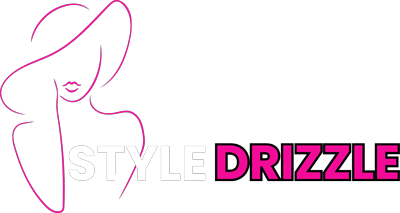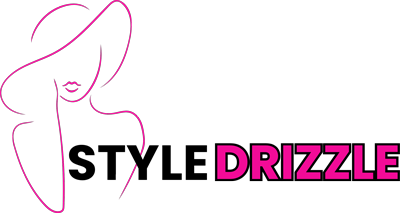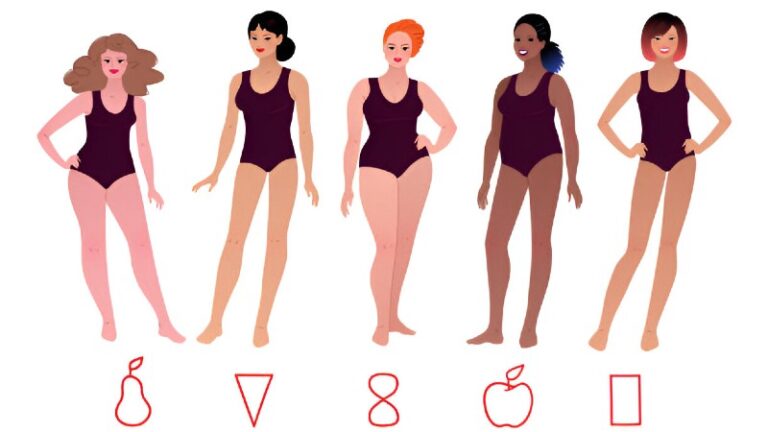Finding clothes that make you feel confident and comfortable can sometimes feel like a puzzle. While trends come and go, understanding your body type is a timeless strategy for looking polished, feeling confident, and making smarter wardrobe choices.
Why Shopping for Your Body Type Matters
Many people underestimate how much body type awareness can impact their style. Dressing for your proportions:
- Enhances natural features and creates balance
- Reduces wasted spending on clothes that don’t flatter
- Boosts confidence by emphasizing strengths rather than hiding perceived flaws
- Supports sustainable shopping by prioritizing pieces you’ll actually wear
For instance, investing in a high-quality wrap dress that accentuates your waist may be more valuable than buying multiple trend-based tops that don’t suit your frame.
Understanding Body Types
While traditional guides divide body shapes into five categories hourglass, pear, apple, rectangle, and inverted triangle it’s more effective to view body types as a combination of proportions, posture, and muscle distribution. Modern styling also considers lifestyle, activity level, and even clothing goals (workwear vs casual vs eveningwear).
Key Measurements to Identify Your Proportions
Before shopping, take accurate measurements:
| Measurement | How to Measure | Why It Matters |
|---|---|---|
| Shoulders | Measure around the widest point of your shoulders | Determines top fit and jacket sizing |
| Bust/Chest | Measure at the fullest point | Crucial for tops, dresses, and layering |
| Waist | Measure at the narrowest point | Helps define fit for skirts, pants, and dresses |
| Hips | Measure at the fullest part | Guides bottom fit and balance for proportions |
Body Types and Flattering Clothing Strategies
Hourglass
Characteristics: Balanced bust and hips with a defined waist.
Shopping tips:
- Opt for wrap dresses, fitted tops, and high-waisted bottoms.
- Avoid boxy silhouettes that hide the waist.
- Example: A belted midi dress emphasizes the natural curve while maintaining elegance.
Pear (Triangle)
Characteristics: Wider hips and narrower upper body.
Shopping tips:
- Draw attention to the upper body using bright colors, patterns, and statement jewelry.
- Choose A-line skirts and structured jackets to balance proportions.
- Example: Pair a cropped blazer with a flowing midi skirt to create visual balance.
Apple (Round)
Characteristics: Broad upper body with less defined waist, often slimmer legs.
Shopping tips:
- Emphasize legs and shoulders with shorter hemlines or statement collars.
- Use tunic tops or wrap dresses to create gentle waist definition.
- Example: An empire waist dress draws the eye upward while flattering the midsection.
Rectangle (Straight/Flute)
Characteristics: Similar width at bust, waist, and hips.
Shopping tips:
- Create curves using peplum tops, ruffled skirts, and belts.
- Play with textures, layers, and bold patterns to add dimension.
- Example: A puff-sleeve blouse paired with a cinched waist skirt adds volume and shape.
Inverted Triangle
Characteristics: Broad shoulders with narrower hips.
Shopping tips:
- Highlight hips with flared trousers or skirts, keeping tops streamlined.
- Use darker or simpler tops to de-emphasize width.
- Example: Dark fitted blouse paired with patterned wide-leg pants draws attention downward.
Lifestyle and Activity Considerations
Understanding your body type is essential, but lifestyle factors can influence clothing choices:
- Active lifestyles: Stretch fabrics and performance wear can enhance fit and comfort without sacrificing style.
- Professional environments: Structured silhouettes, tailored fits, and modest necklines help create authority while flattering your frame.
- Casual settings: Layering, playful patterns, and varied textures allow experimentation and emphasize strengths naturally.
Fabric, Pattern, and Color Guidance
Choosing the right materials can significantly influence how clothing flatters your body type:
- Fabric: Structured fabrics (cotton blends, denim) support shape; drapey fabrics (silk, chiffon) enhance curves gently.
- Patterns: Vertical stripes elongate, horizontal stripes widen, bold prints add volume where needed.
- Colors: Dark colors slim, light/bright colors highlight, monochrome outfits create uniform lines.
Example Wardrobe for Each Body Type
| Body Type | Key Wardrobe Staples | Style Example |
|---|---|---|
| Hourglass | Wrap dresses, pencil skirts, fitted tops | Belted midi dress with classic pumps |
| Pear | Cropped jackets, A-line skirts, patterned tops | Cropped blazer + flowing midi skirt |
| Apple | Empire waist dresses, tunics, statement collars | Empire wrap dress + heeled sandals |
| Rectangle | Peplum tops, layered skirts, belts | Puff-sleeve blouse + cinched waist skirt |
| Inverted Triangle | Flared trousers, fitted tops, dark jackets | Patterned wide-leg pants + fitted blouse |
Shopping Smarter: Practical Tips
- Try Before You Buy: Always test proportions and movement; sit, walk, and check comfort.
- Mix and Match: Invest in versatile pieces that flatter your body type and can be styled in multiple ways.
- Personalize Your Fit: Alterations can transform off-the-rack items into perfectly flattering pieces.
- Seasonal Review: Reassess your wardrobe as your body changes due to lifestyle, weight fluctuation, or fitness goals.
- Confidence is Key: No guideline is rigid; the ultimate goal is comfort and confidence.
Conclusion
Shopping for your body type is more than following a strict set of rules—it’s about understanding proportions, recognizing strengths, and creating a wardrobe that makes you feel empowered. By combining measurement insights, fabric and pattern choices, and mindful shopping, you can build a stylish and sustainable closet. Whether you’re dressing for work, casual outings, or special occasions, knowing your body type allows you to make confident decisions, elevate your style, and celebrate your natural silhouette.
Remember: fashion is personal. While guidelines provide a framework, your unique confidence and personal style are what make every outfit truly flattering.
Frequently Asked Questions (FAQs)
How do I determine my body type?
To determine your body type, measure your shoulders, bust, waist, and hips. Compare these measurements to identify whether you are hourglass, pear, apple, rectangle, or inverted triangle. Remember, most people are a combination of types, so focus on your dominant shape.
Can my body type change over time?
Yes. Age, lifestyle, fitness routines, and events such as pregnancy can change your body proportions. It’s a good idea to reassess your measurements periodically to ensure your wardrobe remains flattering.
What are the most flattering clothes for an hourglass figure?
Hourglass figures look best in clothing that highlights the waist, such as wrap dresses, pencil skirts, and fitted tops. Avoid boxy silhouettes that hide curves and opt for structured fabrics that complement your natural proportions.
How can pear-shaped individuals balance their proportions?
Pear-shaped individuals can balance proportions by emphasizing the upper body with bright colors, patterns, or statement accessories, while choosing A-line skirts or flared trousers to gently highlight the hips without adding bulk.
Are there styling tips for men’s body types?
Yes. Men with rectangular (H) frames should use fitted shirts and horizontal patterns to add shape, while inverted triangle (V) frames benefit from streamlined tops and fuller bottoms. Oval (O) frames can elongate their figure with vertical stripes, and triangular (A) frames can broaden the shoulders with horizontal patterns or structured tops.
How do fabric and patterns affect body type styling?
Structured fabrics provide support and define shape, while drapey fabrics enhance curves. Vertical stripes elongate the body, horizontal stripes widen it, and bold prints add volume where needed. Choosing the right material can significantly improve how clothing flatters your silhouette.


